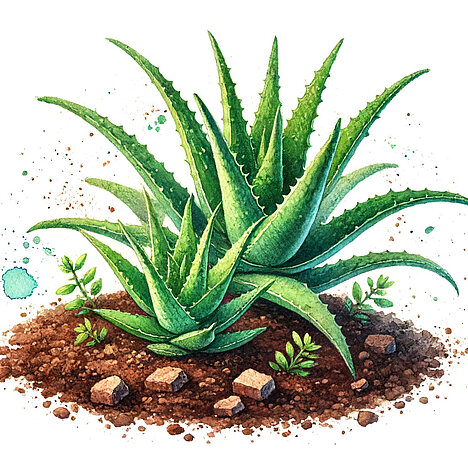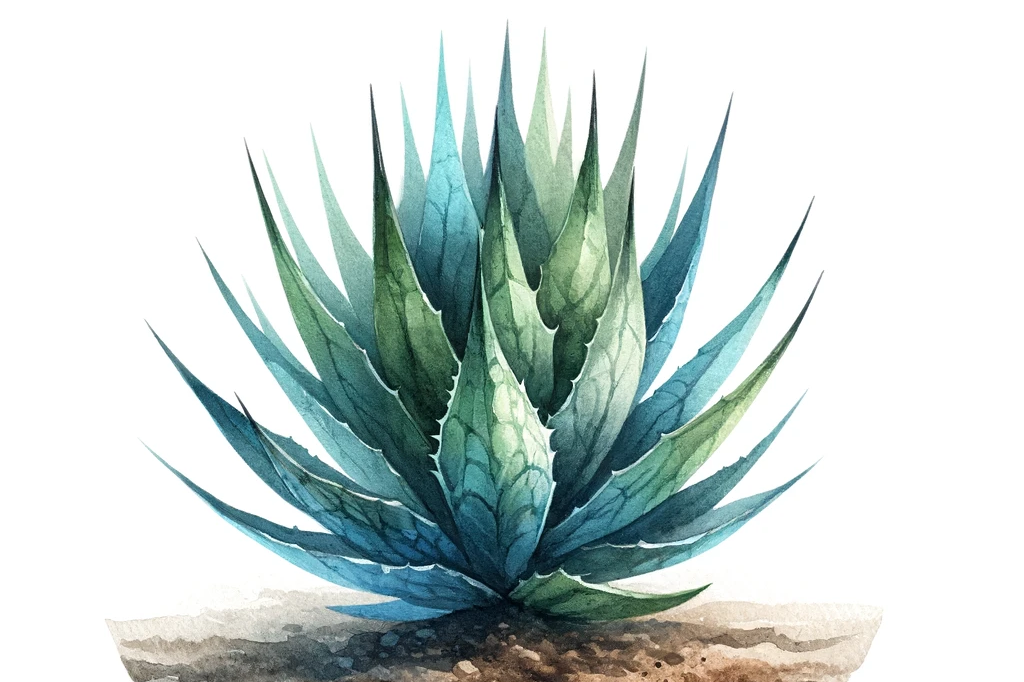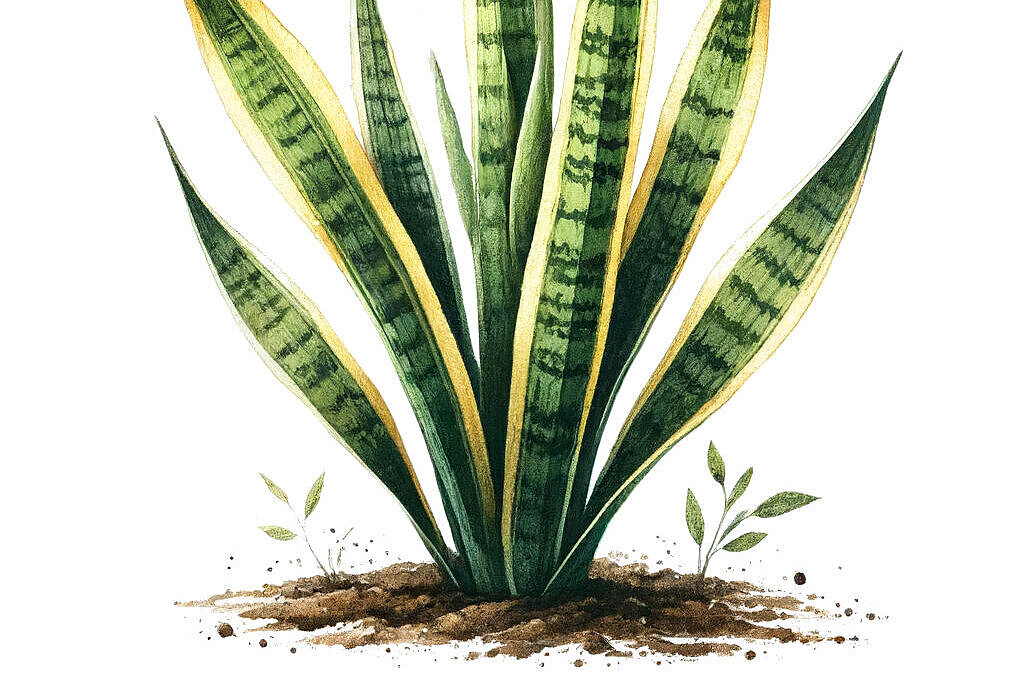Aloe

What is aloe?
Aloe is a genus of succulents that includes over 300 different species. The best known and most commonly used species is aloe vera, also known as the desert lily. It originally comes from Africa and Asia, but is now cultivated worldwide.
Aloe vera has thick, fleshy leaves that are covered with thorns at the edges. Inside the leaves is a valuable gel consisting of water and numerous nutrients and active ingredients. These include, among others:
- Minerals such as calcium, magnesium, iron and zinc
- Vitamins such as A, B, C and E
- Enzymes such as amylase, lipase and protease
- Amino acids such as lysine, methionine and tryptophan
- Antioxidants such as flavonoids and carotenoids
- Polysaccharides such as acemannan and glucomannan
- Saponins such as aloin and barbaloin
These ingredients give aloe vera a wide range of healing properties that can be used both internally and externally.
How does aloe work for dogs?
Aloe for dogs can help with various ailments by having the following effects:
- Anti-inflammatory: aloe reduces the formation of inflammatory messengers and thus relieves swelling, redness and pain.
- Wound healing : Aloe promotes blood circulation, cell division and collagen formation, thus accelerating the healing of injuries, burns and skin diseases.
- Moisturizing : Aloe moisturizes the skin and coat, making them supple and shiny.
- Immune boosting : Aloe stimulates the immune system by increasing the activity of macrophages, lymphocytes and killer cells, thus improving the body's defense against pathogens.
- Digestive: Aloe regulates the intestinal flora by promoting the growth of beneficial bacteria and inhibiting harmful bacteria. It also has a mild laxative effect and thus helps with constipation.
What products are available for aloe for dogs?
There are various products on the market for aloe for dogs, which can be selected depending on the area of application. The most common are
- Creams: Creams usually contain a high proportion of aloe gel and are suitable for external use for skin problems such as eczema, allergies or fungal infections. They are applied directly to the affected areas and gently massaged in.
- Shampoos: Shampoos usually contain a lower proportion of aloe gel and are suitable for regular skin and coat care. They are used in the same way as normal shampoos and provide gentle cleansing and moisturizing.
- Feed additives: Feed supplements usually contain a concentrated extract of the aloe gel or the whole leaf and are suitable for internal use for digestive complaints or to strengthen the immune system. They are added to the feed or drinking water or given directly into the mouth.
- Gels: Gels usually contain pure aloe gel or a high proportion of it and are suitable for both internal and external use. They can be applied to skin problems, wounds or burns or administered for digestive problems or to strengthen the immune system.
What should you look out for in aloe for dogs?
Aloe for dogs is generally well tolerated and has hardly any side effects. Nevertheless, you should pay attention to a few points in order to achieve the optimum effect and avoid possible risks:
- Quality: Make sure that the products are made from high-quality aloe vera that has been organically grown and gently processed. Avoid products that contain additives such as colorants, fragrances or preservatives, which can impair the effect or trigger allergic reactions.
- Dosage: Stick to the recommended dosage, which may vary depending on the product and area of application. An overdose can lead to diarrhea, vomiting or kidney problems. Underdosing can weaken or cancel out the effect.
- Tolerance: Observe your dog after using aloe products for possible intolerances such as skin rash, itching or gastrointestinal complaints. If you notice such symptoms, stop using the product and consult a vet.
- Caution: Avoid contact of aloe products with your dog's eyes, ears or mucous membranes, as this can cause irritation. Also avoid your dog eating raw aloe plants as they contain aloin, which is toxic to dogs.
Aloe for dogs is a natural and effective way to support your four-legged friend with various ailments. Whether as a cream, shampoo, food supplement or gel, aloe can improve your dog's skin care, digestion and immune system. However, make sure that you use high-quality products that have been specially developed for animals and that you adhere to the correct dosage and application.
Properties 6
Are you looking for other ingredients with a specific property?
Just click on them to find more.
If you notice any signs of hypersensitivity or poisoning in your dog, you should see your vet immediately. We are not a substitute for a vet, but we try to be as accurate as possible. Every dog reacts differently and we recommend you get a second opinion or consult your vet if in doubt.
Stay healthy and take good care of your four-legged friend!😊
Similar to Aloe
Agave is a genus of succulents consisting of more than 200 species. Most agaves originate from Mexico and the southwest of the USA, where they grow in dry and hot areas. Agaves have thick and fleshy...
Bow hemp (Sansevieria) is a genus of plants in the asparagus family. It originates from Africa and Asia and is also known as mother-in-law's tongue or African sisal. The plant is characterized by...
Haworthia is a genus of small, succulent plants belonging to the Asphodeloideae family. Haworthias are characterized by their fleshy, often spineless leaves that grow in rosettes. These plants are...
Gasteria is a genus of succulent plants that belongs to the aloe family and is mainly native to South Africa. These plants are known for their hard, often spotty leaf structure and their ability to...



